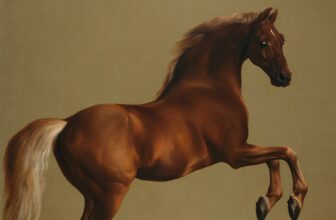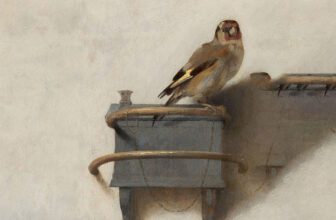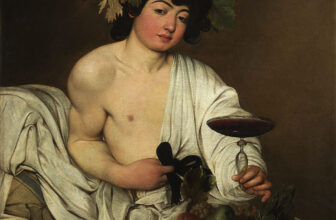
Where Is Anxiety by Edvard Munch Located Today
In the mist of Norwegian twilight, under a sky brushed with deep reds and ominous shadows, a crowd of haunted faces walks across a bridge. Their eyes are wide, vacant, their expressions fixed in ghostly anguish. Behind them looms a backdrop of swirling color, blood-red skies, churning water, and hills darkened with dread. This is Anxiety, a painting created in 1894 by Edvard Munch, the Norwegian artist most famous for The Scream. But while The Scream captures a singular, almost primal moment of terror, Anxiety delves deeper. It is not one person’s cry, it is the silent suffering of many.
A Companion Piece to The Scream
When viewers first encounter Anxiety, many immediately see the aesthetic parallels to Munch’s more famous work, The Scream. The two share the same location: the bridge in Oslo, overlooking the Oslofjord, a place tied intimately to Munch’s own emotional breakdowns and memories of trauma. In Anxiety, however, the figure screaming has vanished. Instead, a procession of faces, eerily similar in their vacant stare and pale skin, suggests that Munch’s exploration of psychological anguish has moved from the individual to the collective.
The atmosphere in Anxiety is suffocating. The bold, unnatural color palette, fiery reds, stark blacks, lifeless blues, compresses the scene into a claustrophobic nightmare. The figures walk together, yet each seems isolated, locked in their own mental prison. It is this emotional landscape that makes Anxiety so profoundly unsettling, and so universally resonant.
What Is the Meaning of Anxiety by Edvard Munch?
Anxiety is not merely a representation of fear. It is a meditation on dread, a deeper, more existential form of suffering. Munch himself viewed art as a way to reveal the soul, to give form to emotions that defy verbal description. In Anxiety, he captures what it feels like when fear becomes chronic, when the weight of existence presses down not just on one person but on an entire society.
According to Munch, “I do not paint what I see, but what I saw.” This key statement offers insight into the emotional realism of his work. Anxiety is not a literal depiction of people walking across a bridge, but rather a symbolic representation of the emotional state he once experienced and continued to observe in others.
Munch was haunted throughout his life by mental illness, death, and despair. He once wrote:
“Illness, madness and death were the black angels that kept watch over my cradle and accompanied me all my life.”
This quote helps illuminate Anxiety as not only a personal confession but a universal diagnosis. He saw society as sick with spiritual malaise, alienated, uncertain, and terrified by modernity. In the late 19th century, rapid industrialization, shifting cultural norms, and new scientific discoveries created a world that was exciting, yet disorienting. Munch channeled these feelings into his canvases. Anxiety is a mirror to that fractured world.
What Did Edvard Munch Say About Anxiety?
Munch never gave a single, detailed explanation of Anxiety the painting. However, he wrote extensively about his emotional and artistic struggles in his journals. Many of these writings reveal his belief that art must explore the deep truths of the human psyche, even when those truths are painful.
He once declared:
“My art is rooted in a single fear: the fear of life, the fear of death, the fear of madness.”
This trinity of fear, life, death, madness, is central to understanding Anxiety. The painting expresses not only dread of external forces but the internal torment of being human. Munch saw anxiety not as a personal failing, but as a fundamental part of existence. It is what happens when the soul confronts its own fragility.
He also spoke often about the connection between love, loss, and fear. For Munch, anxiety was not just about terror, it was about vulnerability. The pain of losing his mother and sister at a young age left deep scars, and these traumas became recurring motifs in his art. Anxiety is one such motif, a distilled expression of spiritual disquiet.
What Does Anxiety Mean in Art?
Anxiety in art is more than a theme; it’s a form of emotional transmission. Through brushstrokes, color choices, composition, and symbolism, artists can convey the intangible sensations of fear, dread, and alienation. Munch was among the first modern artists to place emotion above realism, opening the door to Expressionism.
In art, anxiety can manifest as distorted figures, harsh colors, or unsettling perspectives. It often breaks the rules of harmony and balance to depict the dissonance within the mind. Unlike fear, which is often tied to a specific source, anxiety in art explores the fear of the unknown, the pervasive tension that something is wrong even when nothing is happening.
Anxiety exemplifies this approach. The faces in the painting do not scream or gesture wildly. Instead, their stillness and their blank eyes speak volumes. The disquiet lies not in action but in inaction, in the silent horror that nothing can be done.
Modern and contemporary artists have followed in Munch’s footsteps. Artists like Francis Bacon, Egon Schiele, and even contemporary creators like Jenny Holzer or Tracey Emin have explored the landscape of mental turmoil. Through unsettling visuals and raw emotional honesty, they continue the legacy Munch helped to establish.
What Type of Art Is Anxiety by Edvard Munch?
Anxiety belongs to the movement known as Symbolism, but it also prefigures Expressionism. Munch was not trying to paint reality; he was trying to paint the emotional truth behind reality. Symbolists often used metaphor and allegory to address philosophical and emotional themes, and Munch used color and form to visualize internal states of mind.
Expressionism, which would become a dominant art movement in the early 20th century, took this even further, distorting reality to reflect psychological states. Munch was a direct influence on German Expressionist artists like Ernst Ludwig Kirchner and Emil Nolde. He laid the groundwork for emotional honesty in visual language.
Anxiety, then, stands at the crossroads of Symbolism and Expressionism. Its surreal landscape, haunting repetition of faces, and intense chromatic palette are all tools to express the intangible experience of inner fear.
Is There a Colour for Anxiety?
Munch’s palette in Anxiety is deeply symbolic. The blood-red sky, dark waters, and ghostly pale faces all contribute to a mood of foreboding and despair. If anxiety had a color, Munch seemed to suggest, it would be a collision of red and black, colors of chaos, passion, and death.
Red in art often symbolizes danger, passion, or violence. In Anxiety, it dominates the sky, suggesting that the very air is charged with tension. Black, often used to symbolize the unknown or the void, consumes the clothing of the figures. Their connection to one another is minimal, more like shadows than companions.
In modern psychology and color theory, blue is often associated with sadness, but red and black are commonly linked to anxiety and fear. Munch intuitively understood this long before color psychology was formalized. His color choices make the painting not only visually striking but emotionally visceral.
Where Is Anxiety by Edvard Munch Located Today?
Today, Anxiety is housed at the Munch Museum (Munchmuseet) in Oslo, Norway. The museum is dedicated to Edvard Munch’s life and work, preserving his legacy through an extensive collection of over 28,000 pieces, including paintings, drawings, prints, and personal artifacts.
The Munch Museum was relocated in 2021 to a modern building on the Oslo waterfront, right beside the Opera House. The new museum offers a fitting backdrop for Munch’s emotionally intense and spiritually probing artworks. Visitors can experience Anxiety in person, allowing them to fully absorb the atmosphere and texture that reproductions can never quite capture.
Seeing the painting in person is a deeply moving experience. The scale, brushwork, and color intensity all work together to draw viewers into Munch’s emotional universe. It’s not just a painting, it’s a state of mind.
The Eternal Relevance of Anxiety
More than 130 years after its creation, Anxiety remains hauntingly relevant. In an age of rising mental health struggles, climate anxiety, political instability, and digital alienation, the painting speaks louder than ever. It reminds us that anxiety is not just a clinical diagnosis, it is an emotional reality shared by many.
Munch once said:
“From my rotting body, flowers shall grow and I am in them and that is eternity.”
In a sense, Anxiety is one of those flowers, born of suffering, yet beautiful in its raw honesty. Through his art, Munch turned personal torment into universal insight. He gave anxiety a face, a color, and a place in the cultural canon.
In Anxiety, we don’t just see a bridge full of ghostly faces. We see ourselves, isolated, uncertain, and yearning for meaning in a world that often offers none. But in that recognition lies a strange kind of comfort: we are not alone. We are part of a procession, moving together beneath the red sky.
And in that shared silence, there is art.




